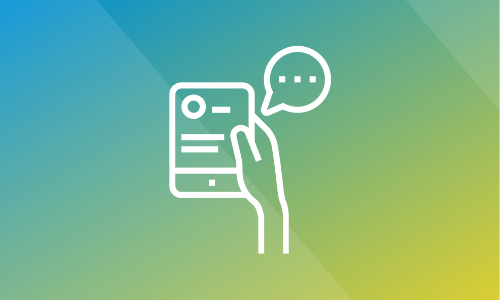The Power of People in Learning
Our understanding of the world has changed. From a hierarchical, top-down, one-person-thinks-for-many approach to organizations, we’re moving on. We’re increasingly recognizing the power of people. To really capitalize on this opportunity, however, we have to consider the implications. What’s needed, when, and how?
There are implications for formal learning and for informal. There are things that foster successful interaction, and of course things that hinder. Moreover, there are times when the overhead of social doesn’t make sense. What are the principles that matter?
The Cognitive Story behind Social Learning
Why does social learning work at all? Why is it beneficial? The underlying story is about creating stories about the world. We do it, naturally. Research and theory have converged on a realization that we build models to explain the world and predict outcomes. We need to do this, as the ability to react appropriately is based upon our predictions about what will be the outcomes of various courses of action. We’re not always rational, but when we are, this is what matters.
The problem, of course, is that our models aren’t often good. Daniel Kahnemann’s Thinking Fast and Slow let us know that our reasoning is biased. Moreover, formal reasoning requires effort and we generally avoid it. And, as Andy Clark’s Being There let us know, our thinking isn’t always rigorous across contexts. Instead, our cognition is ‘emergent’, based upon an interaction with the current context and our past experience.
Importantly, that means that even if you and I are exposed to the same information, we won’t necessarily interpret it the same way. We’ve different backgrounds, and our interpretations of the situation aren’t likely the same. Anyone who’s taught can tell you that the different interpretations learners create on seemingly clear instructions are downright amazing.
This is particularly the case with complex information. When our cognition evolved, our world used to be pretty straightforward. But our cognitive capabilities have allowed us to generate increasingly complex ideas, and we now face a VUCA world: volatile, uncertain, complex, and ambiguous. And many of the concepts we need to understand show increasing interrelation.
The benefit of social interaction around grappling with complex ideas is actually pretty simple: we share our interpretations. And, if we have an opportunity to negotiate a shared understanding, particularly if it is facilitated or feedback is provided, we have a chance to build a better model. And this plays out in different ways depending on the situation.
Formal Learning
Obviously, coaching is one opportunity. Ensuring that there’s someone around to hone a learner’s understanding is good. But that’s typically a secondary approach, after you first establish a base understanding.
In formal learning, then, social learning can be really important when the material we’re dealing with has a potential for ambiguity. This can happen with complex subjects like taxation or quantum mechanics, or difficult topics like discrimination. Is this sexual harassment? Is that an allowable deduction?
There are two major ways that we can leverage this. One is to create a question that has the learners respond with their decision and the reasoning behind it. Then they’re asked to respond to another’s response. A good system, by the way, will have an option (that you should choose) where you can’t see others’ answers until you’ve posted your own response. There can (and should) be a way for an emergent answer, either from prodding or a summary response from an instructor.
The other way is to have groups tasked with coming up with a joint response. You can use case studies or assigned problems: “what should they do” or “was this the right decision”. Managed properly, where every individual responds on their own first before working together to converge helps ensure the best learning and the best outcome.
Informal Learning
The importance of individual contributions comes in informal learning as well. In this case, I’m talking about collaborative problem-solving. Here, we’re putting people together to address a problem. If a solution is proposed before everyone’s had the chance to consider the situation, that solution will constrain the thinking of the other participants. The original proposal for brainstorming was flawed in this way. You need to either have participants consider the situation before coming together, or have time to consider before discussion begins.
Diversity helps. As mentioned earlier, there will be different interpretations. The greater the variety in ideas proposed, the greater the likelihood of a good solution. We’re exploring a space of possibilities, and with too much homogeneity, we’re not going to explore particularly broadly. (This is true for formal learning too; diversity helps generate, and eliminate, more misconceptions.) You need some commonality, particularly around commitment to a solution and the implicit values embodied in the solution, but different skill sets and perspectives help.
Here there’s no one expert with the answer, so experimentation is needed. This really is innovation, and part of the definition is that the outcome is not just new, but an improvement. You’ll need to test and demonstrate the outcome. The learning comes from what you try and what you discover. Share the learning, too! ‘Learning out loud’ is the key to organizational improvement.
I call the sort of dedicated social learning ‘fast’ innovation. There’s also ‘slow’ innovation, where ideas percolate (incubate, ferment, pick your metaphor) in the background. This also is social, as Keith Sawyer in Group Genius and Stephen Johnson in Where Good Ideas Come From point out. Creating an environment for appropriate social interaction is helpful to this end.
When Not to Prescribe Social Learning
Social learning takes extra overhead. You may need to coordinate schedules. People have to dedicate time and learn to work together. And the negotiation of a shared understanding takes extra work. When does this make sense?
For formal learning, it probably doesn’t make sense when there’s a clear and unambiguous answer. You don’t really need to hear other’s interpretation of the quadratic equation (though why everyone should learn it is an important issue). If it’s something that’s right or wrong, and relatively straightforward, it may not be worth it. Social can be fun, or it can be onerous (just listen to your kids complain about group projects; when the teacher’s oblivious to the relative effort). Don’t bother when it’s not helpful.
For solving particular problems, it likely doesn’t make sense when there’s already established expertise. If the expertise doesn’t exist in the organization and it’s a one-time need, hire the necessary consultant or contractor. When it’ll be an ongoing requirement, build or hire the capability.
However, social learning will make sense increasingly. While increasing the likelihood of chance outcomes is a significant benefit for slow innovation, leaving fast innovation to chance opens the door to missed opportunity. Not all information is worth making explicit in digital resources. Sometimes the unexpected will emerge and it’s best to find an appropriate person. Making it easy to find complementary skills, having a directory of expertise, is a valuable investment.
Ultimately, the increasing change we are dealing with will suggest that social interaction will mitigate the challenges. Digital technology allows us ways to transcend barriers of time and distance to achieve these ends more efficiently. Finding ways to work together successfully is more than an opportunity; it’s a necessity. Tapping into the power of people will be key to organizational success.






